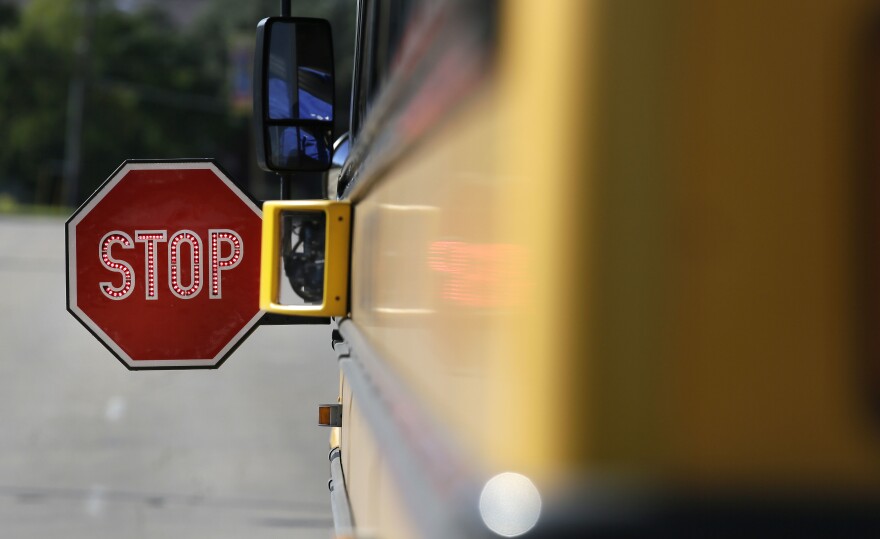Texas schools are navigating through a sea of obstacles as the latest wave of COVID-19 continues to spread across the state. Teachers and calling in sick, parents are filling as substitutes and some campuses have no choice but to temporarily shutter.
Now they can add transportation issues to that list as some of the state's largest public-school districts grapple with how to get students to class on time.
But district officials have said, while there will be some delays, students will eventually make it to school and back home safely.
“We are currently experiencing bus driver shortages due to COVID. However, we are still expecting to cover all routes,” said Cristina Nguyen, a spokesperson for the Austin Independent School District. “We plan to combine routes and everyone who is licensed to drive a school bus will be driving. We may experience some delays and will notify families as needed.”
At San Antonio’s Northside Independent School District, which educates just shy of 103,000 students, some drivers are doing “double runs” where they tack on additional routes to fill in for colleagues who are out sick.
“You can see certainly where that delay is taking place. It’s doing the same number of routes, getting those same numbers of kids home, but doing it with less drivers,” said NISD spokesperson Barry Perez.
Recruiting and keeping drivers was a challenge for school districts even before the pandemic, but the shortfalls are being felt more directly now.
“I don’t know that we have ever been 100 percent fully staffed,” Perez said. “With 16 school districts here in the area we’re always competing for great drivers.”
Some of that competition comes from the San Antonio Independent School District, which has a student population of about 45,000. SAISD hasn’t experienced any current issues, a district official said. But he credits that to year-round job fairs that are paying off now amid the spike in cases.
“We’ve been pretty lucky, really. Throughout this whole pandemic, we’ve been recruiting bus drivers. So I think that’s the key,” said Nathan Graf, the district’s senior executive director for transportation. “We’ve never stopped hiring.”
An additional challenge: The time it takes to train new school bus drivers.
“From date of hiring to an individual getting behind the wheel can be anywhere from 4 to 6 weeks, or longer, depending on the individual candidate,” Perez said.
At San Antonio ISD, the wait can be even longer, Graf said.
“If we hire a bus driver today, that bus driver won’t be able to drive kids for at least another two months,” he said.
The labor shortage in other areas of the state has led Texas’ largest school district to reevaluate its current transportation system.
“Bus driver challenges are not unique to HISD,” said Larry J. Leonard, spokesperson for the Houston Independent School District. “To address them, the department is taking a two-pronged approach — continued recruitment and retention efforts combined with ongoing route and ridership analysis,” Leonard added.
The analysis will include reviewing and deleting unused routes and stops, he said. “We currently have 658 routes. More decreases are being considered.”
KERA News is made possible through the generosity of our members. If you find this reporting valuable, consider making a tax-deductible gift today. Thank you.
Got a tip? Email Julián Aguilar at jaguilar@kera.org.You can follow Julián on Twitter @nachoaguilar.




